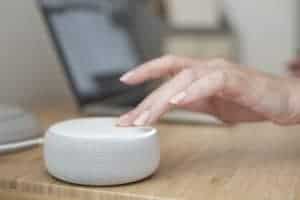Implementing smart home energy monitoring is a crucial step towards reducing your energy costs and creating a more efficient home. By taking advantage of smart technology, you can gain insight into your energy usage patterns and identify areas where you can make improvements. In this guide, we will walk you through the process of setting up smart home energy monitoring to help you achieve significant cost savings. For a more comprehensive understanding of upgrading your home for energy efficiency, you can also refer to The Energy-Smart Home A Step-By-Step Guide to Upgrading …
Key Takeaways:
- Invest in Smart Home Energy Monitoring: Purchasing a smart energy monitoring system is the first step towards achieving cost savings on your energy bills.
- Track Energy Usage in Real-Time: By monitoring your energy usage in real-time, you can identify areas of high consumption and take steps to reduce unnecessary usage.
- Set Energy Saving Goals: Once you have a clearer picture of your energy usage, you can set specific goals to reduce consumption and lower your energy costs.
- Utilise Automated Controls: Smart home energy monitoring allows you to automate certain appliances and devices, ensuring they only operate when necessary, further saving on energy costs.
- Monitor and Adjust as Needed: Regularly review your energy monitoring data and make adjustments to your usage habits and settings to maximise cost savings.
Getting Started with Smart Home Energy Monitoring
Setting up smart home energy monitoring is an essential step towards achieving cost savings and reducing your environmental impact. By accurately tracking your energy usage, you can identify areas for improvement and make informed decisions to optimise your energy consumption.
Essential Tools and Devices for Energy Monitoring
When setting up smart home energy monitoring, there are a few essential tools and devices that you will need. Firstly, you will require a smart energy monitoring system that can track and display your energy usage in real-time. This system typically consists of smart plugs, energy monitors, and a centralised hub that communicates with these devices. Additionally, a smartphone or tablet with access to the monitoring app is crucial for viewing your energy data remotely and making adjustments as necessary.
Integrating Smart Home Devices for Optimal Functionality
To achieve optimal functionality with your smart home energy monitoring, it is important to integrate your energy monitoring system with other smart home devices. This can include connecting your energy monitoring system to smart thermostats, smart light bulbs, and smart appliances. By doing so, you can optimise your energy usage based on real-time data and automate energy-saving actions throughout your home. For example, you can set your smart thermostat to adjust the temperature based on your energy usage patterns, or schedule your smart appliances to run during off-peak energy hours to save on costs.
‘
Setting Up Your Smart Home Energy Monitor
Before you start setting up your smart home energy monitor, make sure you have all the necessary equipment and tools. To help you with the process, you can refer to Saving Energy With Smart Home Devices for a detailed guide on how to set up and optimise your smart home energy monitoring system.
Step-by-Step Installation Guide
When setting up your smart home energy monitor, it’s essential to follow a step-by-step installation guide to ensure everything is properly connected and functioning. Below is a simple breakdown of the installation process.
| Step 1: | Identify the best location to install your energy monitor near your electricity meter. |
| Step 2: | Turn off the electricity supply before connecting the device to the meter. |
| Step 3: | Follow the manufacturer’s instructions to install and connect the smart home energy monitor. |
Tips for Effective Usage and Maintenance
To ensure maximum effectiveness and longevity of your smart home energy monitor, here are some tips to keep in mind to save energy and reduce your utility bills:
- Regular Maintenance: Keep your energy monitor clean and free from any obstructions to ensure accurate readings.
- Optimise Settings: Adjust the settings on your energy monitor to match your specific energy usage patterns for maximum efficiency.
- Monitor Results: Regularly check your energy usage data and adjust your habits accordingly to reduce consumption and costs.
Perceiving these tips into your daily routine will significantly help in managing your energy consumption and ultimately saving you money in the long run.
‘
Analyzing and Understanding Your Energy Usage
Now that you have set up your smart home energy monitoring system, it’s time to start understanding your energy usage. This step is crucial in identifying areas where you can make adjustments to reduce energy consumption and save on your utility bills.
How to Interpret Data from Your Smart Monitor
When you access the data from your smart monitor, you may feel overwhelmed by the sheer amount of information available. However, it’s important to focus on key indicators such as peak usage times, standby power consumption, and energy spikes. Look for patterns and abnormal usage that might indicate inefficient appliances or habits. By tracking your energy usage over time, you can gain valuable insights into where you can make changes to reduce consumption and save money.
Factors That Affect Home Energy Consumption
There are several factors that can affect your home energy consumption. These include the size and age of your home, the efficiency of your appliances, insulation, climate, and your daily habits. For example, using old, inefficient appliances can significantly increase your energy usage. In addition, factors such as poor insulation and extreme weather conditions can also lead to higher energy consumption. Knowing how these factors impact your energy usage can help you make informed decisions to reduce your consumption and save on costs.
- Old, inefficient appliances
- Poor insulation
- Extreme weather conditions
Strategies for Maximizing Cost Savings
When it comes to setting up smart home energy monitoring for cost savings, there are a number of strategies you can employ to maximise your savings. By implementing energy-saving tips and utilising smart scheduling and automation techniques, you can make the most of your energy monitoring system and reduce your overall energy costs.
Implementing Energy-Saving Tips
One of the most effective ways to maximise your cost savings is to implement a range of energy-saving tips throughout your home. Simple changes, such as switching to energy-efficient appliances, using LED light bulbs, and improving your home’s insulation, can all contribute to significant energy savings. Other tips include adjusting your thermostat settings, using natural light whenever possible, and unplugging devices when they are not in use. By incorporating these changes into your daily routine, you can reduce your energy consumption and see noticeable savings on your energy bills.
- Energy-saving tips:
- Switch to energy-efficient appliances
- Use LED light bulbs
- Improve home insulation
- Adjust thermostat settings
- Use natural light
- Unplug devices when not in use
Knowing which appliances are using the most energy can also help you pinpoint areas where you can make further improvements to your energy usage.
Smart Scheduling and Automation Techniques
Another effective strategy for maximising cost savings is to utilise smart scheduling and automation techniques. With a smart home energy monitoring system, you can schedule the operation of your appliances and heating/cooling systems to coincide with off-peak energy times, when rates are typically lower. Additionally, automation features can help you adjust your energy usage based on real-time data, allowing you to optimise your energy consumption throughout the day. By taking advantage of these smart technologies, you can reduce your overall energy costs and enjoy greater efficiency in your home.
Troubleshooting and Optimizing Your Smart Home Energy System
Now that you’ve set up your smart home energy monitoring system, it’s essential to troubleshoot and optimize it to ensure that you are getting the most out of it. By addressing common issues and periodically reviewing and updating your system, you can maximise cost savings and efficiency.
Common Issues and How to Resolve Them
It’s common to encounter issues with your smart home energy monitoring system, such as inaccurate readings or connectivity problems. To resolve these issues, first ensure that all devices are properly connected and have sufficient power. If you notice discrepancies in your energy usage data, double-check that your sensors are correctly positioned and that the data is being transmitted accurately. If connectivity issues persist, consider relocating your Wi-Fi router or investing in a signal booster to strengthen the connection. Additionally, regularly updating the software and firmware of your system can help resolve any compatibility issues and ensure smooth operation.
Periodic Review and System Updates for Peak Performance
Periodically reviewing and updating your smart home energy monitoring system is essential for maintaining peak performance. Conduct regular checks to ensure that all sensors and devices are functioning correctly, and review your energy usage data to identify any abnormal patterns or spikes. By staying on top of updates and maintenance, you can ensure that your system continues to operate at its best, maximising cost savings and minimising energy wastage.
How to Set Up Smart Home Energy Monitoring for Cost Savings
With these considerations in mind, you can now confidently set up smart home energy monitoring to maximise cost savings. By choosing the right energy monitoring system, identifying and addressing energy-wasting habits, and leveraging the real-time data provided, you can effectively lower your electricity bills and reduce your environmental footprint. Investing in energy monitoring is an important step towards a more sustainable and cost-efficient home. By taking control of your energy usage, you can make informed decisions that benefit both your wallet and the planet.
FAQ
Q: What is smart home energy monitoring?
A: Smart home energy monitoring involves the use of devices and technology to track and analyse energy usage in the home, providing real-time data and insights to help users reduce energy consumption and save on costs.
Q: How does smart home energy monitoring work?
A: Smart home energy monitoring systems typically consist of sensors that are installed on key appliances and electrical circuits. These sensors collect data on energy usage and transmit the information to a central hub or a smartphone app, where it can be viewed and analysed by the user.
Q: What are the benefits of setting up smart home energy monitoring?
A: By setting up smart home energy monitoring, users can gain a better understanding of their energy usage patterns and identify opportunities to reduce waste and save on energy costs. It also allows for proactive maintenance of appliances and electrical systems, helping to prevent costly repairs and replacements.
Q: What are the key considerations for setting up smart home energy monitoring?
A: When setting up smart home energy monitoring, it’s important to consider the types of sensors and devices needed for the specific appliances and circuits in the home. Compatibility with existing smart home systems and the ability to access and interpret the data collected are also important factors to consider.
Q: How can I maximise cost savings with smart home energy monitoring?
A: To maximise cost savings with smart home energy monitoring, users should regularly review the data collected to identify areas of high energy usage and implement strategies to reduce consumption. This may involve setting up automated schedules for appliances, investing in energy-efficient upgrades, and making behavioural changes to reduce unnecessary energy use.









